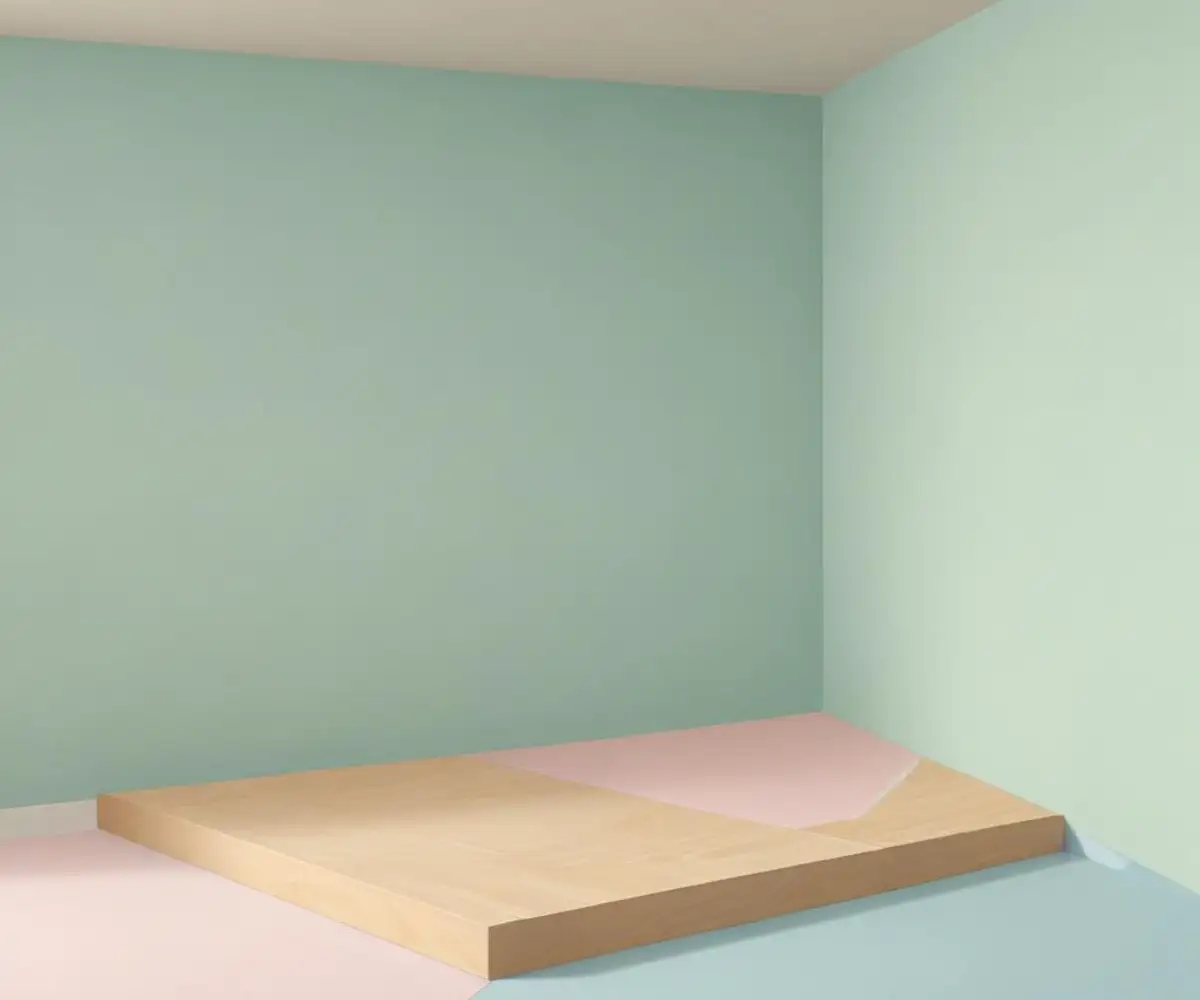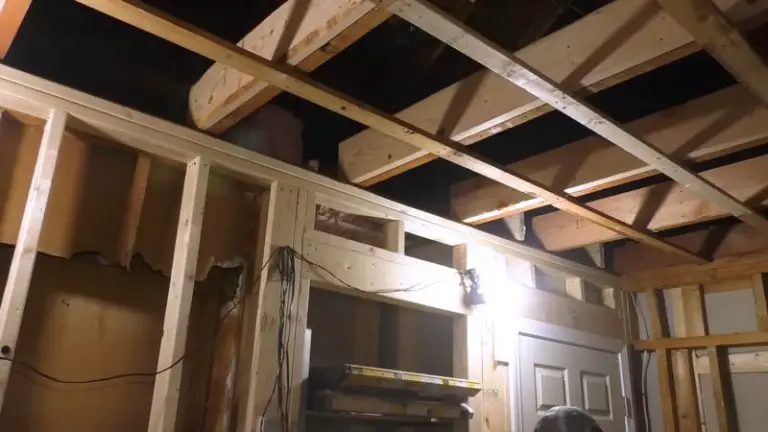Pressure Treated Bottom Plate in Basement: The #1 Mistake That Leads to Mold & Rot
You are ready to transform your damp, concrete basement into a beautiful, finished living space. You have your plans, your tools, and a vision for the final result. But lurking beneath the surface, in the very first step of framing your walls, is a critical choice that can mean the difference between a durable, healthy space and a disaster zone of mold, rot, and structural failure.
The decision revolves around one crucial component: the bottom plate of your wall frame. This single piece of lumber is the only part of your wall that will have direct, permanent contact with the concrete floor. Get this choice wrong, and you set in motion a domino effect of moisture-related problems that can ruin your entire project.
You'll Learn About
The Hidden Enemy: Why Concrete is a Wood-Killer
To the naked eye, a basement concrete slab might look and feel perfectly dry. This is a dangerous deception. Concrete is a porous material, acting like a hard sponge that constantly wicks moisture up from the ground beneath it through a process called capillary action.
When you place untreated wood, like standard SPF (spruce-pine-fir) lumber, directly onto this concrete, you are creating a direct pathway for that moisture to be absorbed into the wood fibers. This trapped moisture creates the perfect breeding ground for mold, mildew, and wood-destroying fungi, leading to rot that can compromise the structural integrity of your walls.
What Happens When the Bottom Plate Fails?
A rotted bottom plate isn’t just a cosmetic issue. As the wood decays, it loses its ability to hold fasteners and support the weight of the wall. This can lead to a host of problems, from baseboards that won’t stay attached to walls that become unstable.
In severe cases, the entire wall structure can begin to sag or shift. You might notice that your drywall moves when pushed, a clear sign that the underlying frame is no longer sound. This is not just a simple repair; it’s a structural failure that requires tearing out the wall and starting over.
The Non-Negotiable Solution: Pressure-Treated Lumber
The solution is simple, effective, and almost universally required by building codes: you must use pressure-treated (PT) lumber for the bottom plate of any wall framed on a concrete slab. Pressure-treated wood is lumber that has been infused with chemical preservatives under high pressure, making it highly resistant to moisture, rot, and insect damage.
This treatment process creates a durable barrier that protects the wood from the constant moisture wicking from the concrete. It is the single most important material choice you can make to ensure the longevity and safety of your finished basement.

Your Two Lines of Defense: Materials You Can’t Skip
Simply using pressure-treated wood is only part of the equation. For a truly professional and durable installation, you need a two-part system: the right wood and a barrier to separate it from the concrete. This creates two distinct lines of defense against moisture intrusion.
Defense #1: The Right Lumber
Always choose lumber that is rated for “ground contact.” This ensures it has the highest level of preservative treatment necessary for the damp conditions of a basement floor. This small detail provides a robust first layer of protection against decay.
Defense #2: The Sill Sealer Gasket
The second, and equally critical, component is a sill sealer. This is a thin roll of foam gasket that is placed directly on the concrete before the pressure-treated bottom plate is installed. It serves two vital functions: it provides a physical capillary break to stop moisture from wicking up, and it seals small gaps and imperfections in the concrete to prevent air and pest infiltration.
Skipping the sill sealer is a common but costly mistake. It is an inexpensive material that provides an essential secondary layer of protection, ensuring that even if moisture is present, it has no direct path to your wood frame.
| Feature | Pressure-Treated (PT) Lumber | Standard SPF (Kiln-Dried) Lumber |
|---|---|---|
| Moisture Resistance | Excellent; chemically treated to resist rot and decay. | Poor; readily absorbs moisture, leading to mold and rot. |
| Best Use in Basement | Exclusively for the bottom plate that contacts concrete. | For all other framing components (studs, top plates) not in contact with concrete. |
| Code Compliance | Generally required by building codes for contact with concrete. | Not code-compliant for use as a bottom plate on a slab. |
| Cost | Slightly higher initial cost per board. | Lower initial cost per board. |
| Long-Term Value | High; prevents costly repairs from rot and structural failure. | Very low; leads to inevitable failure and expensive remediation. |
The Ultimate Installation Guide: Framing Your Foundation for Success
Installing the bottom plate correctly is a straightforward process, but every step is crucial. Follow this guide to ensure your walls are built on a solid, moisture-proof foundation.
Step 1: Clean and Prepare the Concrete Floor
Thoroughly sweep and vacuum the area where the wall will be built. Remove all dust, dirt, and debris to ensure the sill sealer and bottom plate can lie perfectly flat against the concrete.
Step 2: Install the Sill Sealer
Unroll the sill sealer gasket directly along your chalk line where the wall will be placed. Ensure it lies flat and covers the entire area where the bottom plate will sit. The gasket should be the same width as your framing lumber (e.g., 3.5 inches for a 2×4 wall).
Step 3: Measure, Cut, and Position the PT Plate
Measure and cut your pressure-treated 2×4 to the required length for the wall’s bottom plate. Place it directly on top of the sill sealer. A pro tip: when building a wall with a doorway, keep the bottom plate intact through the door opening during assembly and installation. This keeps the frame square and properly spaced. You can cut it out with a reciprocating saw after the wall is fully secured.
Step 4: Fasten the Plate to the Concrete
Securing the plate firmly to the concrete is essential. This prevents the wall from shifting or lifting over time. You have two primary options for fasteners: concrete screws or a powder-actuated tool.
Advanced Fastening: Choosing the Right Anchor for the Job
The fasteners you choose are just as important as the wood. Because pressure-treated wood contains copper-based chemicals, it is highly corrosive to standard steel. You must use fasteners specifically rated for use with PT lumber, such as hot-dip galvanized or specialized coated hardware, to prevent them from corroding and failing over time.
Option 1: Concrete Screws (e.g., Tapcon)
These are a reliable and popular choice for DIYers. Using a hammer drill with a properly sized masonry bit, drill pilot holes through the wood plate and into the concrete below. Then, drive the specialized concrete screws into the holes until the plate is snug against the floor.
Option 2: Powder-Actuated Nailer (e.g., Ramset)
This tool uses a small gunpowder charge to drive hardened nails directly through the wood and into the concrete. It is significantly faster than using screws but requires more caution and safety equipment. This method is often preferred by professional framers for its speed and efficiency.
Regardless of the method, fasteners should be placed within 12 inches of each end of the plate and approximately every 4 to 6 feet in between.
Costly Mistakes to Avoid at All Costs
Building a basement wall correctly is about avoiding a few critical errors that can undermine the entire project.
- Mistake #1: Using Regular Wood. Never use standard SPF lumber for the bottom plate. It will rot, period.
- Mistake #2: Skipping the Sill Sealer. This inexpensive foam gasket is your second line of defense and is non-negotiable for a properly built wall.
- Mistake #3: Using the Wrong Fasteners. Standard nails or screws will corrode and fail when used with PT lumber. Always use ACQ-rated fasteners.
- Mistake #4: Using PT Lumber for the Entire Wall. Only the bottom plate needs to be pressure-treated. Using it for studs is unnecessary, more expensive, and introduces more chemicals into your home than needed.
The Bigger Picture: Integrating Your Frame Correctly
Your wall frame is part of a larger system. How you connect it to your insulation and overall structure matters. For instance, creating a continuous air barrier is crucial for energy efficiency. When planning your insulation, you might want to learn about the best methods, such as exploring if DIY spray foam for basement walls is the right choice to seal the rim joist area above your new wall.
Furthermore, all framing work must comply with local building codes. Building or altering walls has structural implications, and understanding the rules is essential. It’s always wise to be aware of the serious consequences of removing a wall without a permit, as similar principles apply to adding them incorrectly.
Frequently Asked Questions
Is the smell from pressure-treated wood dangerous indoors?
Modern pressure-treated lumber (like ACQ or CA) is considered safe for indoor use when used as intended for a bottom plate. The chemicals are stable and do not off-gas in the same way older, arsenic-based treatments did. Once the walls are enclosed with drywall, any odor is negligible.
Can I use a plastic vapor barrier instead of a sill sealer?
While a heavy-duty plastic sheet can act as a moisture barrier, a foam sill sealer offers the added benefit of air sealing by conforming to imperfections in the concrete. For the best protection, the combination of pressure-treated wood and a sill sealer gasket is the recommended professional standard.
How high up the wall should I use pressure-treated wood?
Only the bottom plate that is in direct contact with the concrete needs to be pressure-treated. All vertical studs and the top plates should be standard, untreated SPF lumber. This is because the studs are not touching the concrete and are not subject to the same moisture-wicking forces.
Your Foundation for a Safe and Dry Finished Basement
Finishing a basement is a significant investment of time, money, and effort. The success of the entire project starts from the ground up—literally. By using a pressure-treated bottom plate, a sill sealer, and the correct fasteners, you are creating a durable foundation for your walls that will resist moisture, prevent mold, and stand the test of time.
Don’t let a simple mistake at the very beginning compromise your hard work. Get the bottom plate right, and you can build the rest of your basement with the confidence that it’s built on a solid, professional, and lasting foundation.

